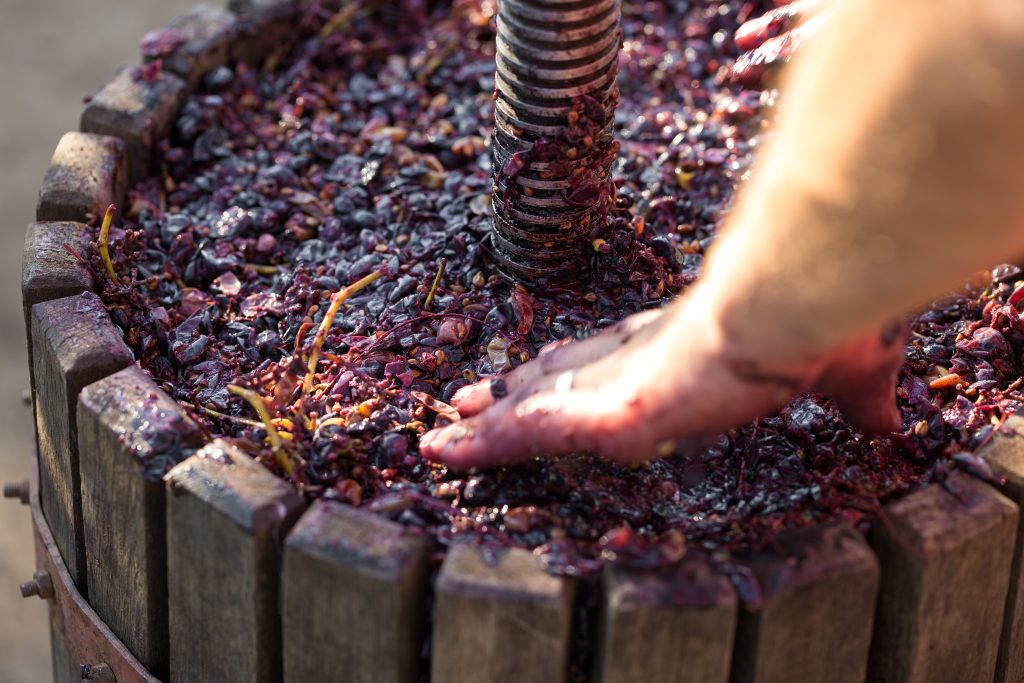Have you ever wondered which country produces the most wine in the world? Well, in 2023, France has claimed the top spot, surpassing Italy as the largest global wine producer. This remarkable achievement for France comes as a result of various factors, including a drop in Italian wine production due to the impact of mildew on vineyards. In this article, we will explore the impact of France’s rise in wine production and the opportunities it presents in the ever-changing wine industry.
Contents
- France Surpasses Italy in Wine Production
- Impact of Extreme Weather on Global Wine Production
- Challenges in Bordeaux and Southwest Regions
- Bordeaux’s Challenges and Government Support
- Contrasting Harvests in Bordeaux, Burgundy, and Champagne
- Investment Opportunities and Recommendations
- France Becomes the Largest Global Wine Producer
- Impact of Declining Global Wine Sales and Consumption
- Smallest Global Wine Production in 60 Years
- Opportunities for Innovation in the Wine Industry
- Factors Affecting the Wine Market
- Impact on Prices and Demand
France Surpasses Italy in Wine Production
France’s surpassing of Italy in wine production marks a significant milestone in the global wine industry. This achievement is a result of various factors, including the weather impact, vineyard challenges, production dynamics, market trends, and investment potential. The weather conditions played a crucial role in this shift, with Italy’s vineyards being heavily affected by mildew. Meteorological conditions, such as bad weather and heatwaves, reduced Italy’s national production by around 14%, particularly in the central south region, which experienced losses of up to 50%. On the other hand, France managed to navigate these challenges and saw a 3% increase in wine production compared to the previous years’ average.
These production dynamics have significant implications for the wine market. The European Union witnessed a 7% drop in wine consumption, with France experiencing a 15% decline. Additionally, EU wine exports decreased by 8.5% compared to the previous year. To support the wine producers, the European Commission adopted measures, including distilling wine to remove it from the market. Despite these challenges, there are investment opportunities arising from France’s rise in wine production. The investment potential lies in the regional differences, demand and supply balance, and nature’s unpredictability. Burgundy and Champagne are recommended for investment, as rising demand for Burgundy wine and promising harvest conditions in Champagne offer favorable conditions for investors. France’s surpassing of Italy in wine production not only reveals the impact of weather and vineyard challenges but also highlights the potential for investment in the dynamic wine market.
Impact of Extreme Weather on Global Wine Production
Extreme weather events have had a significant impact on global wine production, affecting growth, production, and wine quality. Spain experienced a 14% decline in wine production due to drought conditions, while Italy saw a 12% decrease due to heavy rains causing mildew. South American countries, Australia, and South Africa also faced record decreases in crop sizes due to drought, wildfires, and other extreme weather events. These challenges highlight the vulnerability of the wine industry to climate change and the need for adaptation strategies to ensure the future of wine production.
Growth
You might be surprised to learn that the impact of extreme weather on global wine production has resulted in significant changes in the industry. Weather patterns play a crucial role in determining the success or failure of wine production, affecting production dynamics, market trends, regional variations, and even investment potential. To paint a clearer picture, let’s take a look at the table below, which highlights the impact of extreme weather on wine production in various regions:
| Region | Weather Impact | Production Change |
|---|---|---|
| Spain | Drought conditions | -14% |
| Italy | Heavy rains causing mildew | -12% |
| South America | Drought and wildfires | Record decrease |
| Australia | Drought | -24% |
| South Africa | Decreased wine grape production | -10% |
As we can see, extreme weather events have caused a decline in wine production globally, resulting in the smallest harvest in the last 60 years. This decline has also contributed to changes in market dynamics, with declining global wine sales and consumption. However, these challenges also present opportunities for innovation in the industry, as seen in the development of new wine products during times of over-production and falling consumption.
Production
The impact of extreme weather on global wine production has led to significant changes in the industry, particularly in terms of production dynamics, market trends, regional variations, and investment potential. Climate change has played a major role in shaping the production landscape, with countries like Spain, Italy, and South America experiencing significant decreases in wine production due to drought, heavy rains, and wildfires. Technological advancements have also played a role in mitigating the impact of extreme weather, with innovative solutions being developed to protect vineyards and improve wine quality. Market competition has intensified as countries adapt to the changing climate and strive to maintain their position in the global wine market. As a result, the wine industry has witnessed a decline in global wine sales and consumption, leading to opportunities for innovation and product diversification.
Wine Quality
Climate variations have significantly affected the quality of wines across the globe. The impact of extreme weather on global wine production has been undeniable. From drought conditions in Spain to heavy rains causing mildew in Italy, wine-producing regions have faced challenges that have resulted in decreased wine production and compromised wine quality. These weather-related issues have highlighted the importance of vineyard management practices that promote climate resilience and adaptability. In order to maintain terroir expression and aging potential, wine producers have been testing new grape varieties and implementing sustainable farming techniques. The goal is to minimize the negative effects of extreme weather events and ensure consistent wine quality. As the wine industry continues to navigate the ever-changing climate, it is crucial for vineyard management practices to evolve in order to preserve the integrity and excellence of wines worldwide.
Challenges in Bordeaux and Southwest Regions
In the Bordeaux and Southwest regions, wine producers are facing significant challenges due to unpredictable weather patterns and the outbreak of mildew disease. Regional uncertainties and climate challenges have made it difficult for producers to plan and predict their harvests. The weather patterns have become increasingly erratic, with extreme heatwaves, heavy rains, and droughts impacting the vineyards. These conditions have created favorable environments for the outbreak of mildew disease, which has further affected the grape yields.
In response to these challenges, the government has provided support to Bordeaux producers through initiatives such as the distillation scheme and vine uprooting programs. These initiatives aim to alleviate the impact of falling demand and disease-ridden harvests. However, it is important to note that Bordeaux’s red wines have been losing allure among younger generations in France, which adds another layer of complexity to the region’s challenges.
Despite these difficulties, there is still hope for the Bordeaux and Southwest regions. Demand for fine wine in China is expected to almost double by 2026, presenting an opportunity for producers to tap into this growing market. Additionally, vineyard initiatives, such as the ones conducted by the French Wine and Vine Institute in the Beaujolais region, are testing new techniques and grape varieties to protect vines and adapt to changing climatic conditions.
Bordeaux’s Challenges and Government Support
You can overcome the challenges faced by Bordeaux and receive government support through proactive measures and innovative approaches. Bordeaux has been grappling with falling demand and disease-ridden harvests, particularly with French red wines losing allure among younger generations in France. However, there is hope for Bordeaux producers as the demand for fine wine in China is set to almost double towards 2026. To address these challenges, the government is offering support to Bordeaux producers through initiatives such as the distillation scheme and vine uprooting initiatives.
The distillation scheme involves removing excess wine from the market by distilling it, thereby reducing the supply and potentially easing pressure on prices. Meanwhile, vine uprooting initiatives aim to address the issue of oversupply by encouraging producers to remove vineyards and reduce production.
To provide a visual representation of these initiatives, here is a table outlining Bordeaux’s challenges and the corresponding government support:
| Bordeaux’s Challenges | Government Support |
|---|---|
| Falling demand | Distillation scheme |
| Disease-ridden harvests | Vine uprooting initiatives |
Contrasting Harvests in Bordeaux, Burgundy, and Champagne
As we delve into the topic of ‘Contrasting Harvests in Bordeaux, Burgundy, and Champagne,’ it is essential to highlight the varying outcomes in these renowned wine regions. Bordeaux, known for its prestigious red wines, faced challenges this year due to unpredictable weather conditions. The region experienced a mix of heatwaves, frost, and hail, resulting in a disease-ridden harvest and falling demand. On the other hand, Burgundy and Champagne enjoyed ideal weather conditions, leading to an abundant harvest. While Burgundy faced some cases of mildew, production is still expected to exceed the five-year average. Champagne, a favorite among investors, managed to keep frost and hail at bay, promising a positive picture for those looking to invest. It’s important to note that climate changes and changing preferences can significantly impact the wine market, making it crucial for producers to adapt to these shifts. As the industry navigates these changes, it will be interesting to see how Bordeaux, Burgundy, and Champagne continue to evolve and meet the demands of wine enthusiasts.
Investment Opportunities and Recommendations
To explore the investment opportunities and recommendations in the wine industry, let’s delve into the varying outcomes of the contrasting harvests in Bordeaux, Burgundy, and Champagne. These regions have experienced different weather conditions and production levels, which can have a significant impact on investments. Here are the key factors to consider:
- Wine market trends: The wine market is influenced by changing consumer preferences, demand fluctuations, and global economic factors. Understanding these trends is crucial for making informed investment decisions.
- Regional investment opportunities: Each region offers unique investment opportunities based on its reputation, production volume, and market demand. Burgundy and Champagne, with their abundant harvests and rising demand, are particularly recommended for 70% of a wine investment portfolio.
- Supply and demand dynamics: The balance between supply and demand is essential for determining the profitability of investments. Monitoring the production levels and market demand in different regions can help identify potential investment opportunities.
- Weather impact on investments: Weather conditions play a significant role in wine production and can have a profound impact on investments. While Bordeaux faces challenges due to unpredictable weather and disease-ridden harvest, Burgundy and Champagne benefit from ideal weather conditions, promising a positive outlook for investors.
- Emerging wine regions: Exploring emerging wine regions beyond Bordeaux, Burgundy, and Champagne can also present investment opportunities. These regions may offer untapped potential and the chance to invest in up-and-coming wineries.
France Becomes the Largest Global Wine Producer
Becoming the largest global wine producer in 2023, France surpasses Italy in wine production, solidifying its position as a dominant force in the wine industry. France’s wine dominance is a testament to the country’s commitment to excellence and its ability to adapt to changing market conditions. The French wine industry has experienced remarkable growth, with French wine production projected to reach 46 million hectolitres, surpassing Italy’s estimated production of 43 million hectolitres. This success can be attributed to France’s wine market leadership and industry achievements.
To highlight the significance of France’s wine production success, let’s take a look at the following table:
| Year | France’s Wine Production (million hectolitres) |
|---|---|
| 2023 | 46 |
| 2022 | 44 |
| 2021 | 42 |
| 2020 | 40 |
| 2019 | 38 |
As we can see from the data, France’s wine production has been steadily increasing over the years, showcasing the country’s continuous growth and resilience in the face of challenges. This achievement is a testament to the hard work and dedication of French wine producers and their commitment to delivering exceptional wines to the world.
France’s rise as the largest global wine producer is not only a milestone for the country but also a reflection of its enduring legacy and influence in the wine industry. With its rich history, diverse terroirs, and commitment to quality, France continues to shape the global wine landscape and inspire wine enthusiasts around the world.
Impact of Declining Global Wine Sales and Consumption
With a significant decline in global wine sales and consumption, you may be wondering about the impact on the wine industry. Here are three key points to consider:
- Declining sales impact:
- Wine consumption has been falling in the last several years, particularly in Europe, with countries like Portugal, Germany, and Spain experiencing significant declines.
- In the U.S., wine volume sales fell by 4.5% and value sales were down 1% in the past 52 weeks.
- Over-production often leads EU countries to pay farmers to remove grape vines or convert crops to alcohol.
- Market challenges:
- The wine market has been shaken by climate change, accumulation of stocks during the pandemic, and inflation.
- EU wine exports decreased by 8.5% compared to the previous year.
- The European Commission has adopted measures to support EU wine producers, including distilling wine to remove it from the market.
- Product innovation and supply-demand balance:
- Times of over-production and falling consumption have historically led to the development of innovative new wine products.
- Product innovation can help balance supply and demand in the wine market.
- The U.S. wine industry, currently facing another decline in consumption and a large healthy grape crop, presents an opportunity for product innovation.
Smallest Global Wine Production in 60 Years
The impact of declining global wine sales and consumption is further emphasized by the smallest global wine production in 60 years, according to recent data. This global wine shortage is a consequence of various factors, including the effects of climate change, regional wine variations, and its impact on wine prices.
The effects of climate change have been devastating for wine production worldwide. Spain experienced a 14% decrease in wine production due to drought conditions, while Italy saw a 12% decrease caused by heavy rains and mildew. South American countries like Argentina, Chile, Brazil, and Uruguay recorded record decreases in crop sizes due to drought and wildfires. Australia and South Africa also faced significant reductions in wine grape production.
These regional variations in wine production have significant consequences for wine prices. With supply decreasing, the demand for wine may outstrip the available quantity, leading to higher prices. This can have a profound impact on consumers and the industry as a whole.
However, this global wine shortage has also led to innovative wine solutions. In times of over-production and falling consumption, the wine industry has historically responded with product innovation. The United States, for example, has seen the development of new wine products such as wine coolers, the rise of red wines’ popularity, and the success of ‘Two-Buck Chuck.’ This demonstrates the industry’s ability to adapt and create new opportunities in challenging times.
Opportunities for Innovation in the Wine Industry
Explore the potential for innovation in the wine industry to meet the challenges of declining global wine sales and consumption. In the face of market challenges, there are several opportunities for innovation that can help balance the supply and demand in the wine market and drive industry growth. Here are three key areas where innovation can make a significant impact:
- Wine Innovation and Product Development: The wine industry can leverage innovation to create new and exciting products that appeal to changing consumer preferences. This can include the development of unique flavor profiles, the use of sustainable and organic practices, and the introduction of innovative packaging solutions.
- Technology and Data-driven Solutions: Harnessing the power of technology and data can provide valuable insights into consumer behavior, supply chain management, and production processes. From precision viticulture techniques to AI-powered analytics, technology can optimize vineyard management, improve quality control, and streamline distribution channels.
- Sustainable Practices and Environmental Stewardship: With increasing emphasis on sustainability, the wine industry has an opportunity to innovate and adopt environmentally friendly practices. This can involve implementing renewable energy sources, reducing water usage, and implementing circular economy initiatives.
Factors Affecting the Wine Market
To understand the current state of the wine market, it is important to consider the various factors that are influencing it. One of the key factors is climate change, which has been impacting wine production worldwide. Extreme weather events such as droughts, heavy rains, heatwaves, and frost have affected vineyards in different regions, leading to a decrease in global wine production. For example, Spain experienced a 14% decrease in wine production due to drought conditions, while Italy saw a 12% decrease due to heavy rains causing mildew. South American countries like Argentina, Chile, Brazil, and Uruguay also witnessed record decreases in crop sizes due to drought and wildfires.
Another factor affecting the wine market is stock accumulation. During the pandemic, wine consumption decreased, leading to an accumulation of stocks. This has put pressure on prices and demand, especially in the European Union. Inflation is also impacting the wine market, as rising costs of production and distribution are affecting the prices of wine.
To support EU wine producers, the European Commission has adopted measures such as distilling wine to remove it from the market. These support measures, including a €1 billion annual support program, aim to alleviate the challenges faced by wine producers.
Furthermore, grape varieties play a significant role in the wine market. Wine producers are adapting to climate change by testing different grape varieties that are more resilient to changing weather conditions. This allows them to protect their vines and adapt to new climatic conditions.
Impact on Prices and Demand
Considering the factors affecting the wine market, you must now delve into the impact on prices and demand. The rise of France in wine production has significant implications for market dynamics, leading to price fluctuations and changes in consumer behavior. Here are three key points to understand the effect on prices and demand:
- Supply and demand balance: With France surpassing Italy as the world’s leading wine producer, the market sees a shift in the supply and demand balance. The increase in French wine production may alleviate some of the pressure on prices, as there is now a larger supply available.
- Consumer behavior: The temporary slowdown in world demand for wine, particularly from China, has an impact on consumer behavior. As the market adjusts to changes in the sector and climate change, consumers may alter their preferences and purchasing habits, leading to fluctuations in demand.
- Economic implications: The impact on prices and demand in the wine market has broader economic implications. The support program for EU wine producers, which includes €1 billion annually, aims to mitigate the effects of market changes. Additionally, the French Wine and Vine Institute conducting tests to protect vines and adapt to new climatic conditions demonstrates the economic importance of sustaining and adapting the wine industry.




